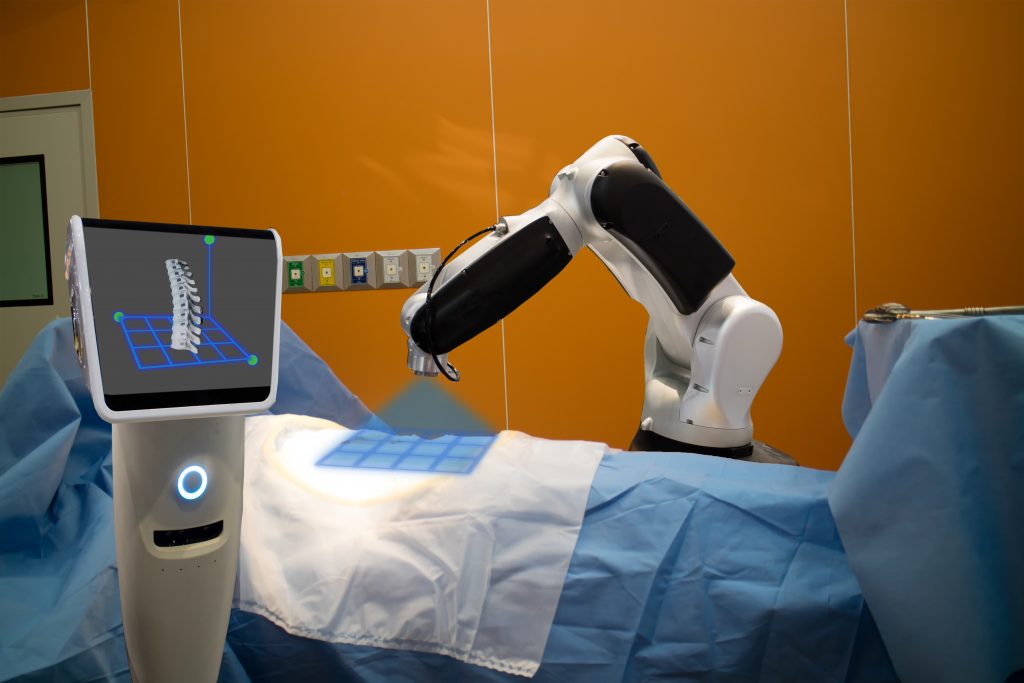Recent Advancements
1. Minimally Invasive Spine Surgery
It is a type of surgery which uses smaller incisions than standard surgery. Thus causing less harm to muscles, less pain, faster recovery, lesser hospital stay and quick return to work after surgery. Minimally invasive spine surgeries are mainly of 2 types. A tubular surgery and endoscopic surgery.
A tubular surgery occurs by inserting small tubes over the spine without opening the skin while an Endoscopic surgery happens through the keyhole incision(5mm) by watching the inside of the spine on TV.



2. Neuromonitoring
(for monitoring the damage to any nerves during ongoing surgery)
Neuromonitoring is used during spine surgery to assess the function of the brain, brainstem, spinal cord or peripheral and cranial nerves. The goal of monitoring is to alert the surgeon and anesthesiologist to impending injury to allow modification of management in time to prevent permanent damage. In some cases, neuromonitoring helps to map areas of the nervous system to guide procedural management.
3. Ultrasonic Bone Scalpel
(Cutting bone without damaging nerves, runs on ultrasonic waves)Bone Scalpel is a novel and unique surgical device which cuts only hard structures i.e bone by amplifying an electrical signal and converting it into a high back-and-forth motion of a blunt blade at the extremely high frequency of 22,500 times per second.
It is very useful in spine surgery as it efficiently slices bone while leaving soft structures like the spinal cord, nerve roots and major arteries largely unaffected during incidental contact. It also reduces bleeding and saves a whole lot of surgical time. Bone Scalpel represents a technological shift with unique advantages over traditional methods for orthopedic and spinal surgery.


4. O-Arm
(Real-time 3d X-ray device to guide implant placement during ongoing surgery)The technology provides an impeccable view which helps surgeons visualize the complex and critical parts of the spine anatomy.
The view provided by O-Arm is 2 and 3-dimensional. It acquires real-time images in high resolution. The system handles basic spine procedures with ease. The technology is advanced and confirms accuracy while screw placement.
5. Robotic Spine Surgery
These systems offer the potential advantages of increased accuracy of screw placement, decreased operative time, and decreased radiation exposure. However, there is a challenging learning curve and various technical factors of these systems that are continuously reassessed to improve operating efficiency and to meet these goals.

